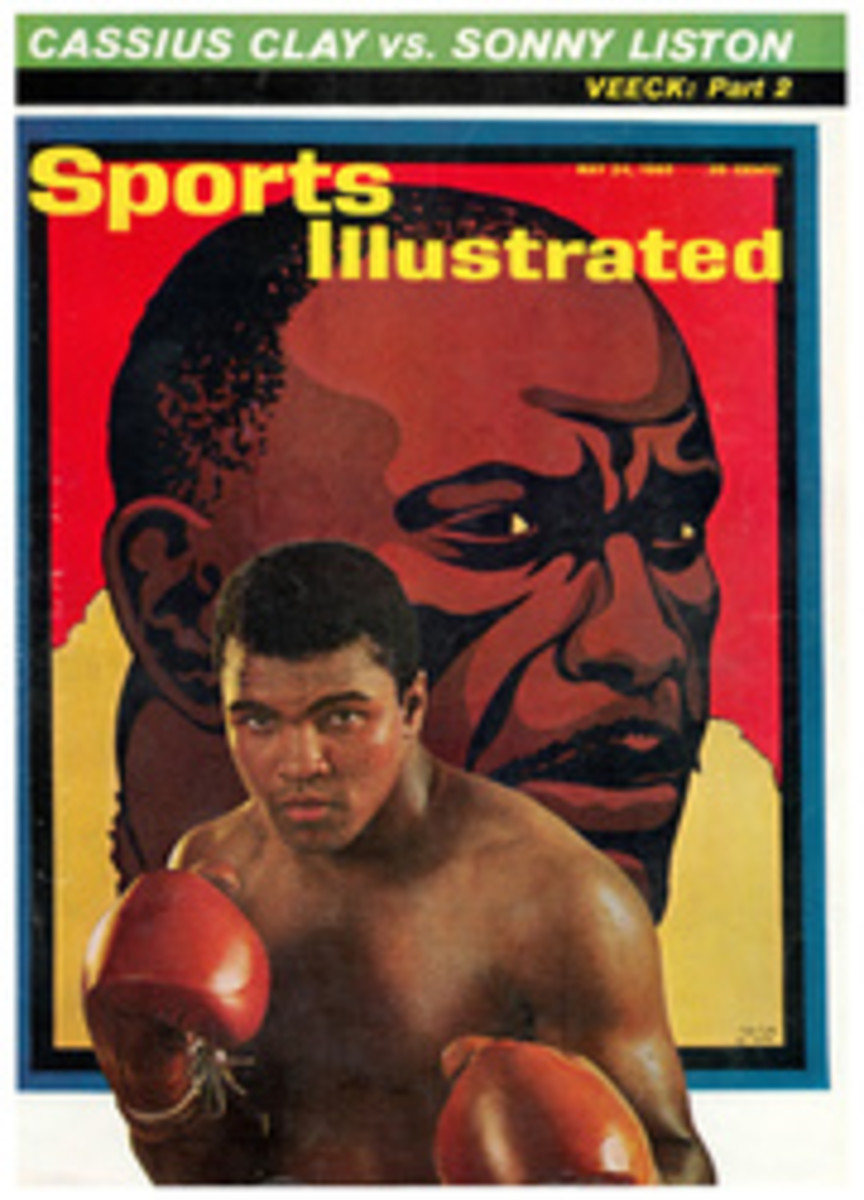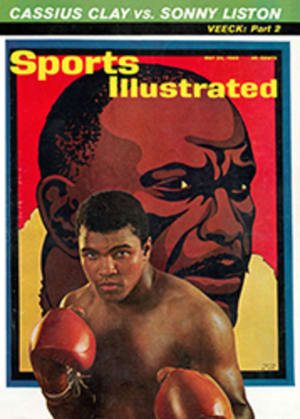
LIKE FATHER, LIKE SONS
A decade ago, while Americans argued the relative merits of Nashua and Swaps, a marvelous Italian horse named Ribot went through his entire career of 16 races in Italy, France and England without a defeat. When he climaxed this brilliant record in 1956 with a second victory in the mile-and-a-half Prix de l'Arc de Triomphe, many foreign horsemen were calling him the greatest in history. And many a U.S. breeder began thinking of ways to acquire his services.
It remained for John W. Galbreath, owner of Darby Dan Farm and the Pittsburgh Pirates (SI, June 1, 1959), to lure Ribot to his Lexington, Ky. stud on a five-year lease for $1.35 million. Ultimately Ribot, sometimes mean and always energetic, joined such famed stallions as Swaps (whom he dislikes), Summer Tan and Sword Dancer at Darby Dan to be courted by some of the finest American mares. "But, despite his being a good foal-getter," Galbreath said recently, "some U.S. horsemen are not completely sold on him."
Ribot is scheduled to return to stud in Milan next year, but now negotiations are under way to bring him back permanently to Kentucky. And no wonder. Two weeks ago in the Kentucky Derby, Ribot's sons, Dapper Dan and Tom Rolfe, ran two-three behind Lucky Debonair. Last week, in the 90th Preakness, Tom and Dan ran one-two in the mile-and-three-sixteenths classic—the first time this has happened in a Triple Crown race since 1948 when Calumet's Citation and Coaltown, sons of Bull Lea, ran one-two in the Derby. The performance refuted once and for all those American critics who said that Ribot was just another overrated foreign stallion who would wind up producing run-of-the-mill horses. He has justified the wisdom of the man who brought him here.
The 90th Preakness followed form to a certain extent, but there were also some unforeseen incidents and a few casualties. Tom Rolfe himself threw his left front shoe—where, even his jockey, Ron Turcotte, does not know, for he never took an awkward step. Kentucky Derby winner Lucky Debonair bucked his left front shin as he finished seventh, to put him out of action for several weeks, and fourth-place finisher Native Charger may have ended his career when he bowed his right front tendon.
As expected, Flag Raiser set the early pace. Bill Shoemaker, on Lucky Debonair, planned again (as he did in the Derby) to stick close to Flag Raiser if he could. But, although Shoe and his horse went off as the 8-to-5 favorite, not all the other jocks in the race figured that Lucky Debonair was the horse to beat. Turcotte declared flatly, "Dapper Dan is the most dangerous." There was good reason to question Lucky Debonair's ability in this second leg of the Triple Crown. A few days before the Preakness his right hind ankle had filled and, although the swelling subsided within 24 hours, this could hardly have helped him run to his full potential. In addition Lucky Debonair obviously did not fancy Pimlico's track, which is deeper than Churchill Downs and lacks the hard base of Aqueduct.
By the time the nine starters were spread out on the run up the backstretch, Flag Raiser was giving a splendid imitation of a horse attempting to lap the field. He was five lengths in front of long shot Swift Ruler, with Lucky Debonair another three lengths behind. Although Turcotte and Tom Rolfe were running smoothly, they were six lengths behind fourth-place Native Charger and it looked then as though all of the come-from-behinders were almost hopelessly out of contention. Flag Raiser rattled off fractions of 22[2/5] for the first quarter, 46 for the first half mile and 1:10[3/5] for six furlongs—and that finished him. "He just plain stopped at the half-mile pole," said Jockey Bobby Ussery.
Surprisingly, Swift Ruler had stayed within sight of Flag Raiser for most of the early going, and as they went into the far turn he took over the lead. Native Charger now looked like the most dangerous contender, and the fact that he did not take advantage of his position may be blamed on the ailing tendon. As for Lucky Debonair, Shoemaker said, "I had to put pressure on him in the backstretch to stay up there, but he wasn't running well. It could have been his ankle, it could have been the track."
There was never a possibility that Turcotte would repeat his Kentucky Derby mistake when he tried to go inside of Ussery and Shoemaker and found himself checked as though he had run into a Fort Knox pillbox. This time Turcotte took the outside route on the far turn, and Tom Rolfe rolled around the field in a graceful arc that took him to the lead at the head of the stretch. On the inside Dapper Dan flashed into contention. In the Derby, ironically, Turcotte and Tom Rolfe had tried to go inside, where there was no room, while Milo Valenzuela and Dapper Dan had been forced outside—where there was so much room that they lost a lot of ground. Now the positions of the two sons of Ribot were exactly reversed.
Driving down the stretch, Tom Rolfe had his race won. But suddenly Dapper Dan came up on the rail. "I pulled my horse in," said Turcotte afterwards. "I wanted to be in, but I didn't want it to be that close." He was referring to the way that Tom Rolfe ducked to the rail midway down the stretch and came close to cutting off Dapper Dan.
"There was actually no contact between us," said Valenzuela, but he felt compelled to claim a foul against Turcotte. "My horse checked himself," he added. "We had racing room, and I never had to check on my own. Still, I had to claim foul just in case." The films showed no contact, and Turcotte's tactic in closing the gap was upheld. Tom Rolfe held off Dapper Dan for the last sixteenth of a mile and won by a neck.
If the victory of this handsome colt was a triumph for international breeding, the modus operandi of his Powhatan stable was somewhat unusual by any standards. Not a single representative of Powhatan was present at the traditional post-position drawing at Pimlico two days before the Preakness. Owner Raymond Guest was in Dublin, working his first month as U.S. Ambassador to Ireland. Turcotte was at New York's Aqueduct for another routine day's racing. Trainer Frank Whiteley and Tom Rolfe were enjoying the peace and quiet of nearby Laurel Race Course, far from the pressures of the inquisitive press and the TV cameras. Earlier in the week, Whiteley had vanned his colt over to Pimlico, without advance warning, to give Tom Rolfe a brisk work, and just as quietly had vanned him back to Laurel.
On the eve of the Preakness, track officials had somehow lured Whiteley, his wife and Turcotte to a dinner dance. They arrived promptly, sat passively at a table by the edge of the floor as four dancing girls threatened to twist themselves into the group's coffee cups and at exactly 10:20—before some of the guests had even arrived—marched out and home to bed. "In Kentucky," said Whiteley, "I think I talked to Ron too much before the Derby. This time I decided what he needed most of all was plenty of sleep before the race and absolutely no instructions from me."
Next month, Ambassador Guest will be back in New York to see Tom Rolfe run in the Belmont Stakes. Without instructions from anybody, Jockey Turcotte said, "The Preakness was my first $100,000 stakes win, but it's the first of many more. If they're asking who's the horse to beat in the Belmont, my answer is Tom Rolfe. Who else?"
PHOTO
In his special paddock at Darby Dan Farm, frisky Ribot is surrounded by fences twice as high as normal, because he often tries to climb out.
PHOTO
In their private race to the wire, Tom Rolfe maintains his slender neck advantage over Dapper Dan, four lengths ahead of their closest pursuer.

